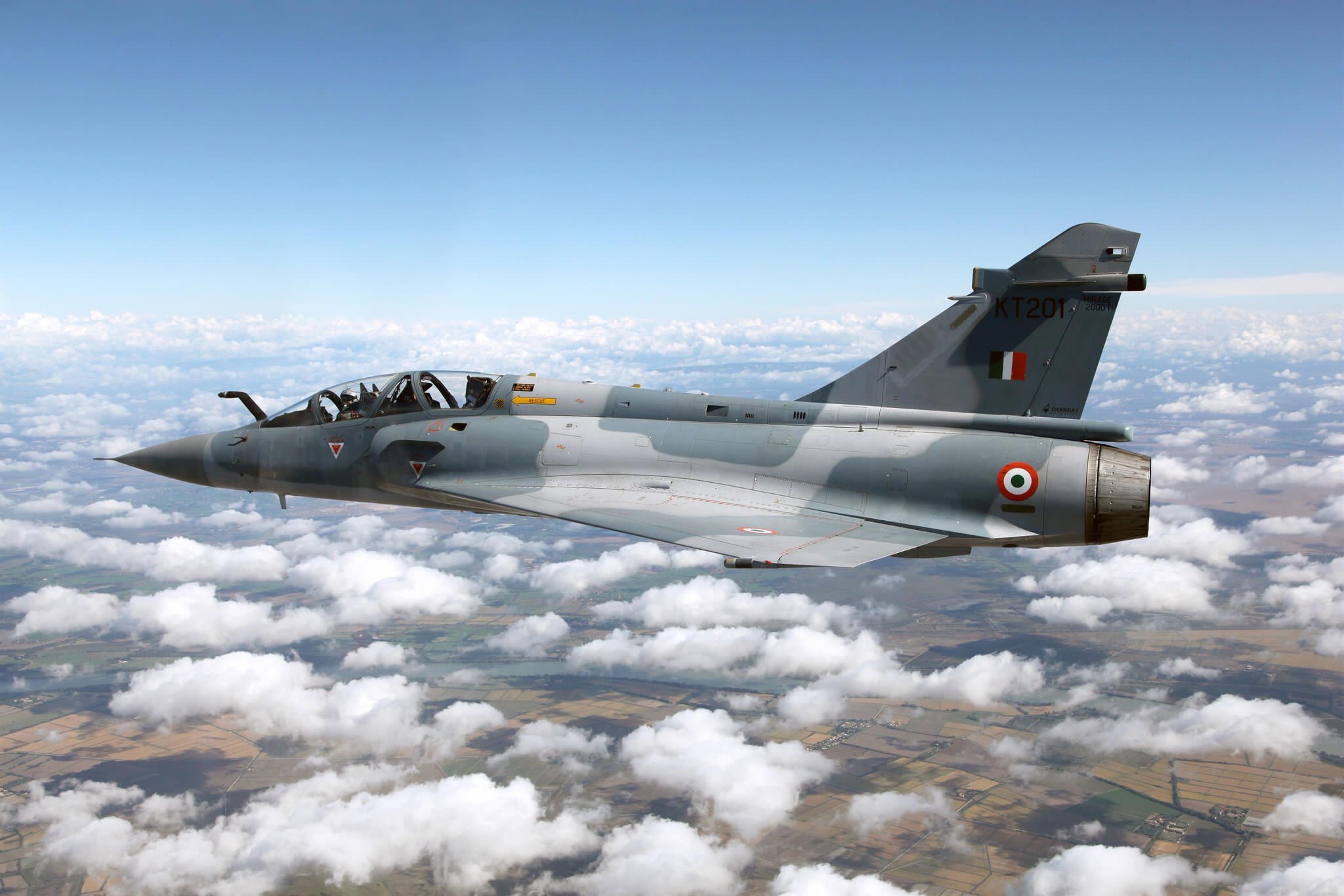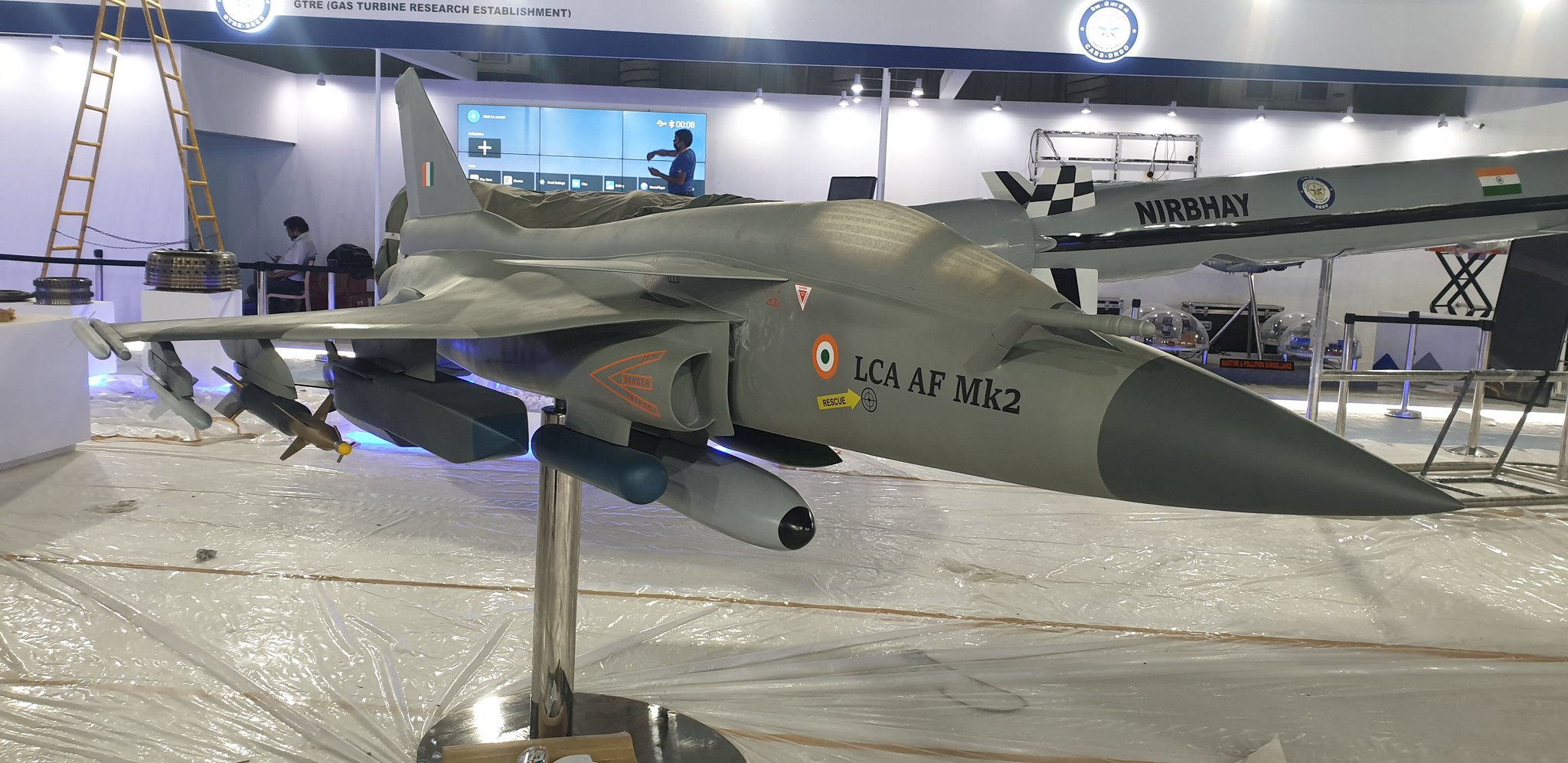Air Chief Marshal of the Indian Air Force (IAF) recently said air defense operations are closely related to offensive aerial operations. Subsequently, in what could be a bid to boost the power of the Indian Air Force, the service has revealed the number of Tejas Mk2 it will be buying.
On 18 July, Air Chief Vivek Ram Chaudhari said that the Indian Air Force has already committed to purchasing six squadrons of the Light Combat Aircraft Mark 2 (LCA M2), which is currently under production. Once the production of these aircraft begins, more orders will be placed by the service, ANI reported.
“Indian Air Force has already committed the induction of six squadrons of Light Combat Aircraft Mark 2 fighter jets. We will decide on other numbers once the production of these aircraft starts,” Air Chief Marshal VR Chaudhari told ANI. Tejas is India’s ‘Make in India’ marvel, indigenously being developed at Hindustan Aeronautics Limited (HAL).
The LCA Mk1 is already in service, and the more capable LCA-Mk1A, 83 of which the IAF had ordered in February last year, will be delivered to the Indian Air Force by the end of this decade. The first three aircraft are reported to be delivered by 2024, with 16 each for the next five years.
The Air Chief’s announcement for Mk2 comes even as India tries to sell its LCA Tejas to potential buyers EurAsian Times had earlier reported that the indigenously developed aircraft has emerged as a top contender for the Malaysian fighter jet contract. India is also vigorously looking toward the Middle East for its export debut.
In addition to the LCA Tejas Mk2, the Indian Air Force (IAF) has also committed to acquiring at least seven squadrons of the fifth-generation Indian fighter Advanced Medium Combat Aircraft (AMCA), which is also being developed at a breakneck pace, informed the IAF top boss.

Retiring Mirage 2000 Fighters
When the Jaguar and Mirage 2000 fighters are to be phased out after ten years, the LCA Mark 2 fighter will replace them. Over many years of service, the Mirage 2000 jets of the IAF have maintained an exceptional operational record.
In February 2019, twelve Mirage 2000 fighter jets crossed the Indian Airspace for the first time to strike the Jaish-e-Mohammed terror launch pads across the Line of Control. Military observers lauded the Mirage 2000’s performance in the 2019 airstrike on Balakot.
The Mirage 2000 was also deployed along the Line of Actual Control (LAC) alongside Jaguars and Su-30MKI after a conflict broke out between India and China in the Eastern Ladakh region.

Even though the French Air Force has retired their Mirage 2000 in favor of 4.5-generation Rafales, the Indian Air Force inked a contract in August 2021 to acquire two dozen phased-out Mirage 2000 aircraft from France for spare parts.
It received the first two of these fighters in November 2021. The aircraft that has been in service for more than three decades is still a useful war machine.
It is thus, worth analyzing how the Tejas Mk2 aircraft that is set to replace the combat-capable Mirage 2000 fare in the Indian Air Force with a multitude of threats surrounding the Indian airspace.
Tejas Mk2 VS Mirage 2000
A multi-role combat fighter, the Mirage 2000 developed by Dassault Aviation comes in single-seat and two-seat variants. The aircraft completed its first flight in March 1978 and was given the go-ahead to take to the skies in the early 1980s. They were accepted into the IAF only in 1985.
In contrast, India’s indigenous Tejas Mark 2A aircraft built at Hindustan Aeronautics Limited (HAL) is a multi-role fighter jet yet to roll out of the HAL hangar. While the IAF approved the aircraft’s comprehensive design review (CDR) last year, experts believe it would not be rolled out before 2026.
The Mirage 2000 measures 14.3 meters in overall length, 9.1 meters in wingspan, and 5.2 meters in height. One SNECMA M53-P2 turbofan engine with 95 kN of thrust powers the aircraft.
In contrast, the Tejas Mk2 variant is a medium-weight aircraft slightly bigger than the Mirage, with an overall length of 14.6 meters, a smaller wingspan, and a height of 8.5 meters and 4.86 meters each.
Tejas Mk-2 will be powered by a GE-F414 INS6 engine with a thrust estimated at 98 kN, more than the Mirage 2000 that it will replace.
Even though the aircraft was envisioned as a Light Combat Aircraft, as seen in the mock-up picture below, the powerful engine has transformed it into a medium-weight fighter jet.

The Mirage 2000 combat aircraft cruises at a speed of 2.2 Mach and has a ferry range of 3,335 kilometers, while the Tejas Mk2 is expected to cruise at 1.8 Mach and has an increased ferry range of 3,500 kilometers.
The aircraft is armed with 2 X 30-millimeter guns, air-to-air missiles MBDA MICA IR/RF, Matra R550 Magic-II, and Matra Super 530D. Its air-to-surface missiles include AM.39 Exocet, AS-30L laser-guided missiles, and ASMP tactical nuclear cruise missile. The fighter jet also carries mk82 bombs.
The Mk2 variant of Tejas will be armed with weapons like the Scalp, Crystal Maze, and Spice-2000. It will be equipped with the native Astra Mark 1 and Mark 2 missiles for air-to-air warfare. Additionally, it would be equipped with Rudram anti-radiation missiles, which were tested by the Defence R&D Laboratory (DRDL) Hyderabad of the DRDO.
Due to a powerful engine, Mark 2 could take off with a maximum all-up weight of 16.5 tons, including the 10-ton weight of the fighter and 6.5 tons of external payload. While these are basic features, the Tejas Mk2 aircraft goes over and beyond the capabilities of the Mirage 2000 in several ways.
Over And Beyond The Mirage 2000
The Uttam AESA radar, a “Made in India” device, will guide the Tejas Mk-2. This indigenous radar is said to be sufficiently sophisticated to offer it an advantage over the Israeli-made radars already mounted on earlier Tejas variants.
Additionally, it is claimed that the Uttam radar can recognize and counteract hostile electronic warfare (EW) attempts which will significantly enhance the combat capability of this fighter jet.
Apart from India, only the US, the EU, Israel, and China have AESA radar capability. This will allow India to create a power balance in the region with China which has been flying its fighter jets close to the LAC recently.

The aircraft’s most intriguing feature is an onboard oxygen generating system (OBOGS). For IAF pilots flying the LCA Tejas, DRDO has provided this autonomous oxygen-generating technology. This technology is utilized in fighter jet cockpits to counteract the rapid drop in oxygen levels at high altitudes.
The Tejas Mk2 aircraft will be equipped with canards capable of carrying a payload of 6,500 kilograms.
The Tejas Mark 2 will have 11 hard points to carry this payload, including one ASRAAM air-to-air missile hard point on each wingtip. Three under-wing pylons will be on each side, with one wet station for fuel drop tanks and three hard points for long-range missiles like the Astra and Rudram.
This is in sharp contrast to the Mirage 2000, which has five hard points on the fuselage, and two on each wing of the Mirage 2000 are available for the payloads of armament systems. Two internally mounted, high-firing-rate 30mm cannons are placed on the single-seat version. The Mirage, however, has undergone upgrades throughout its service.
“The Indian Air Force has sworn by the capabilities of the Mirage 2000 against the US supplied F-16s inducted by Pakistan. Over time, as Pakistan upgraded its weaponry, it was due for the IAF also to build a formidable response. This came in the form of upgrades to the Mirage 2000s. However, with the development of Tejas Mk II, things have taken a different turn.
Tejas Mk II would incorporate a new glass cockpit with an eight-by-twelve-inch multifunction display and an onboard oxygen system that collects air from the outside, removing the need for oxygen bottles. It will also support indigenous Active Electronically Scanned Array (AESA) radar.
Experts believe by 2040, we can see almost the entire fleet of older Jaguars and Mirages be replaced by Tejas Mk II”, said Girish Linganna, Defense and Aerospace Analyst.
Since their induction into the Indian Air Force, the Mirage 2000 aircraft has served the country well. It is why India is procuring phased-out aircraft for spares and maintenance.
When these marvels retire, the Tejas Mk2 would potentially be a suitable replacement and even more so because they are being developed locally with high indigenous content, unlike the Mirage acquired from the French.
Together with LCA Tejas Mk1A, the AMCA, Rafales, and Su-30MKI, the aircraft would add more teeth to India’s air power.
- Contact the author at sakshi.tiwari9555@gmail.com
- Follow EurAsian Times on Google News




